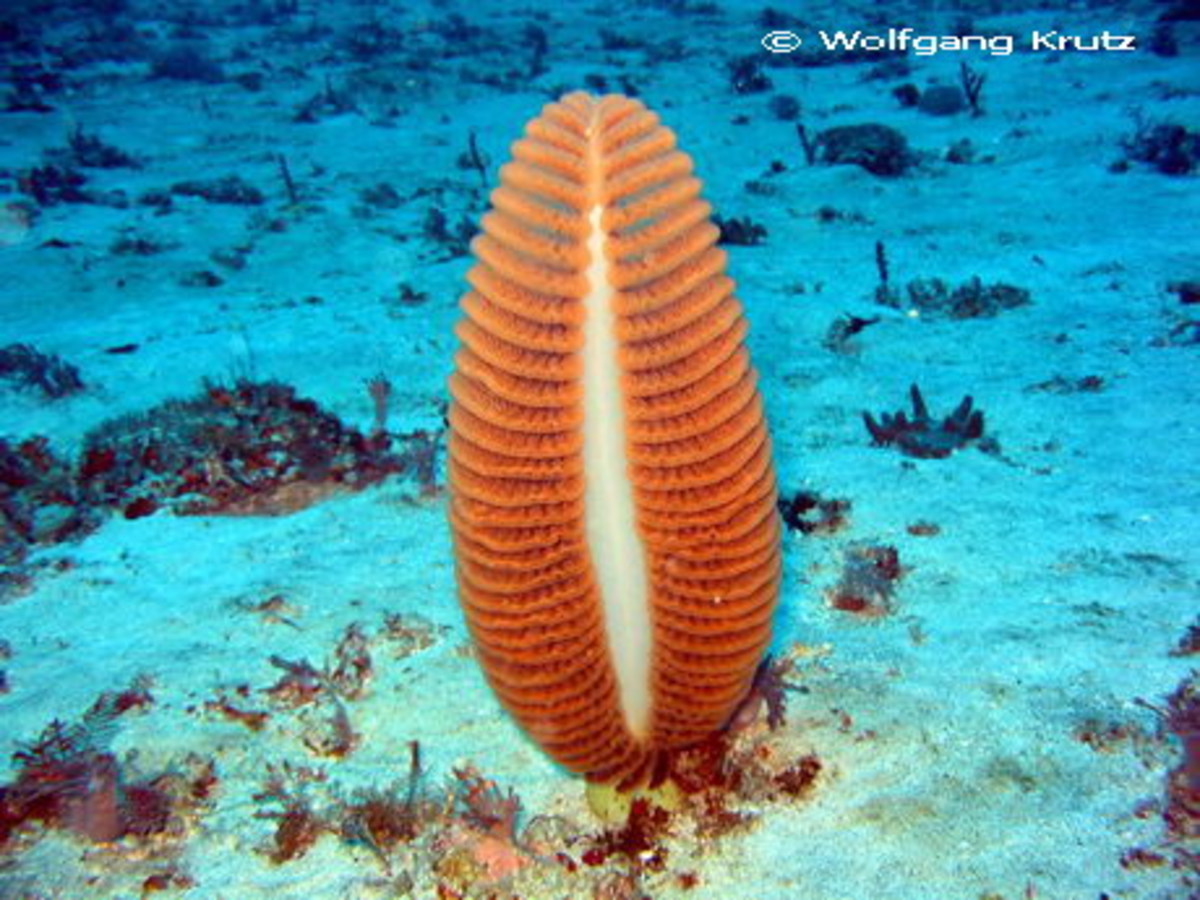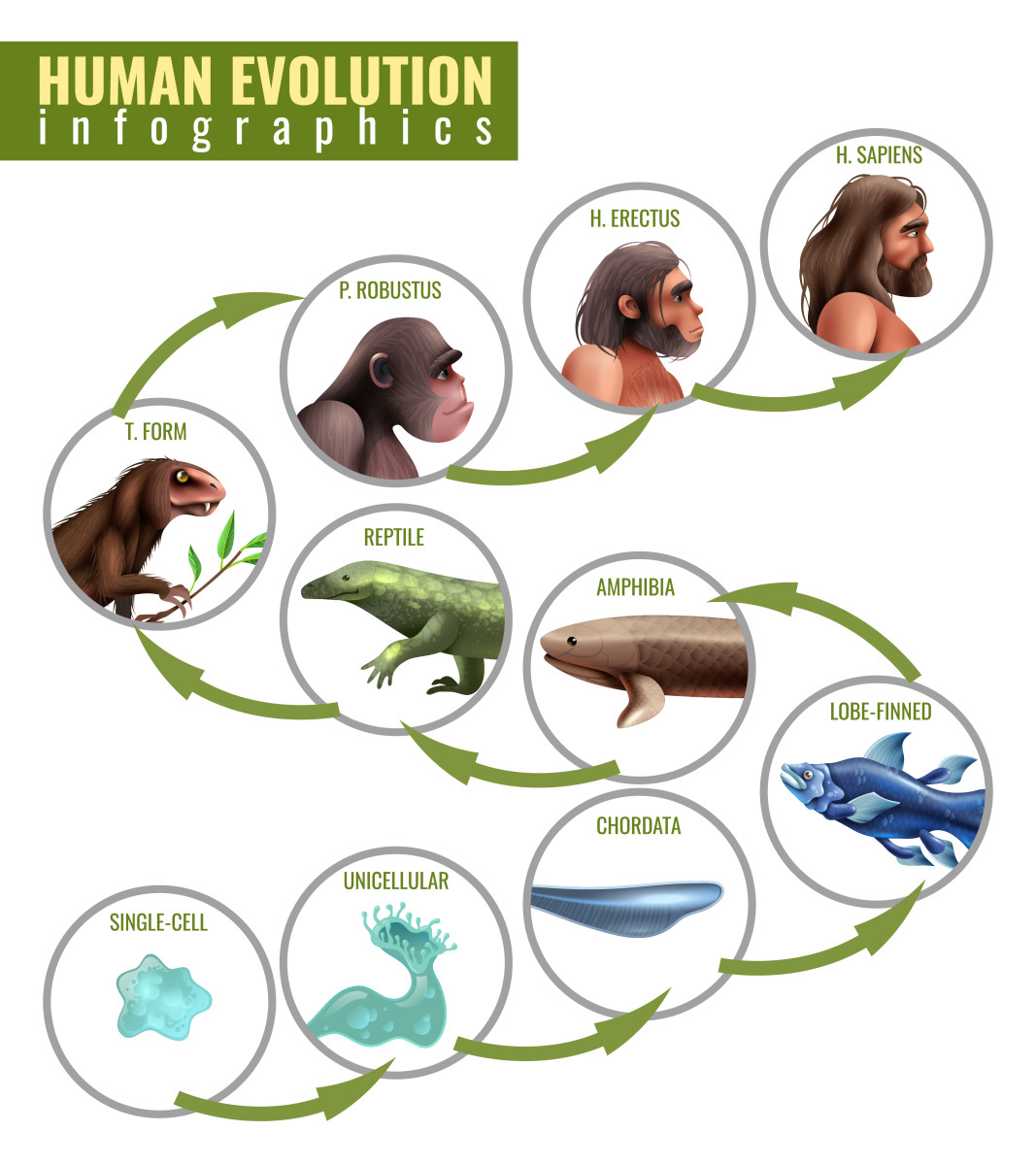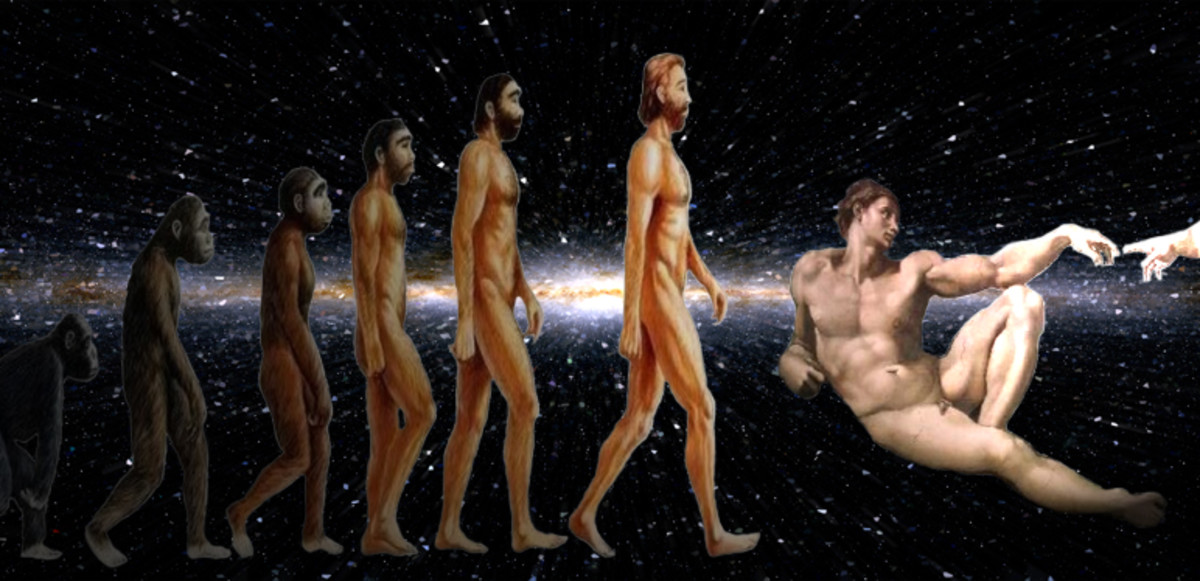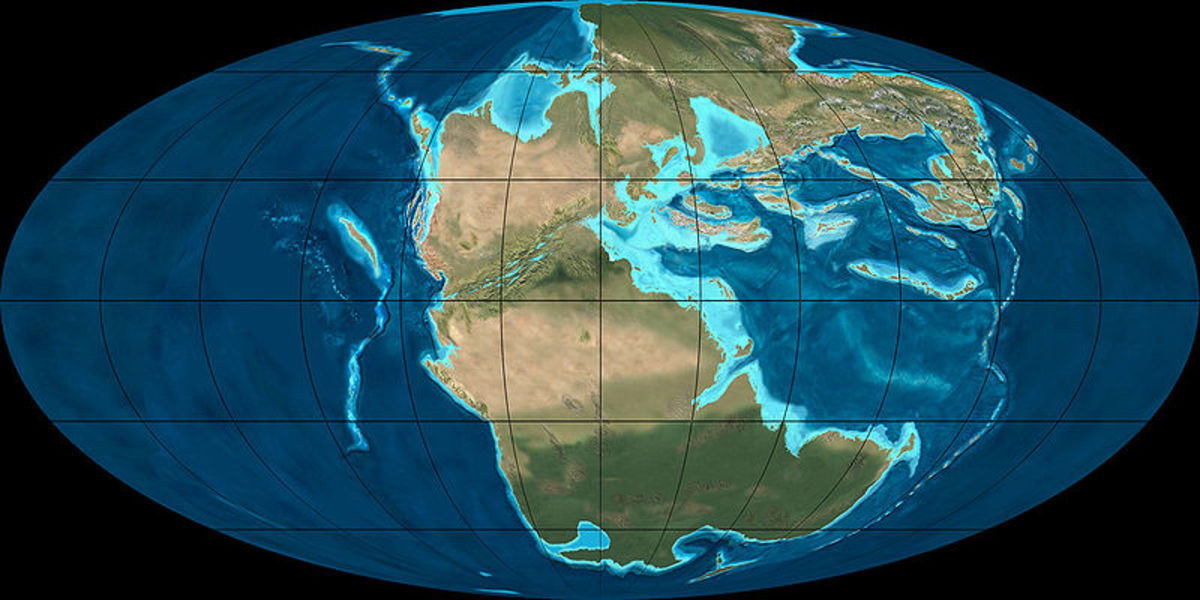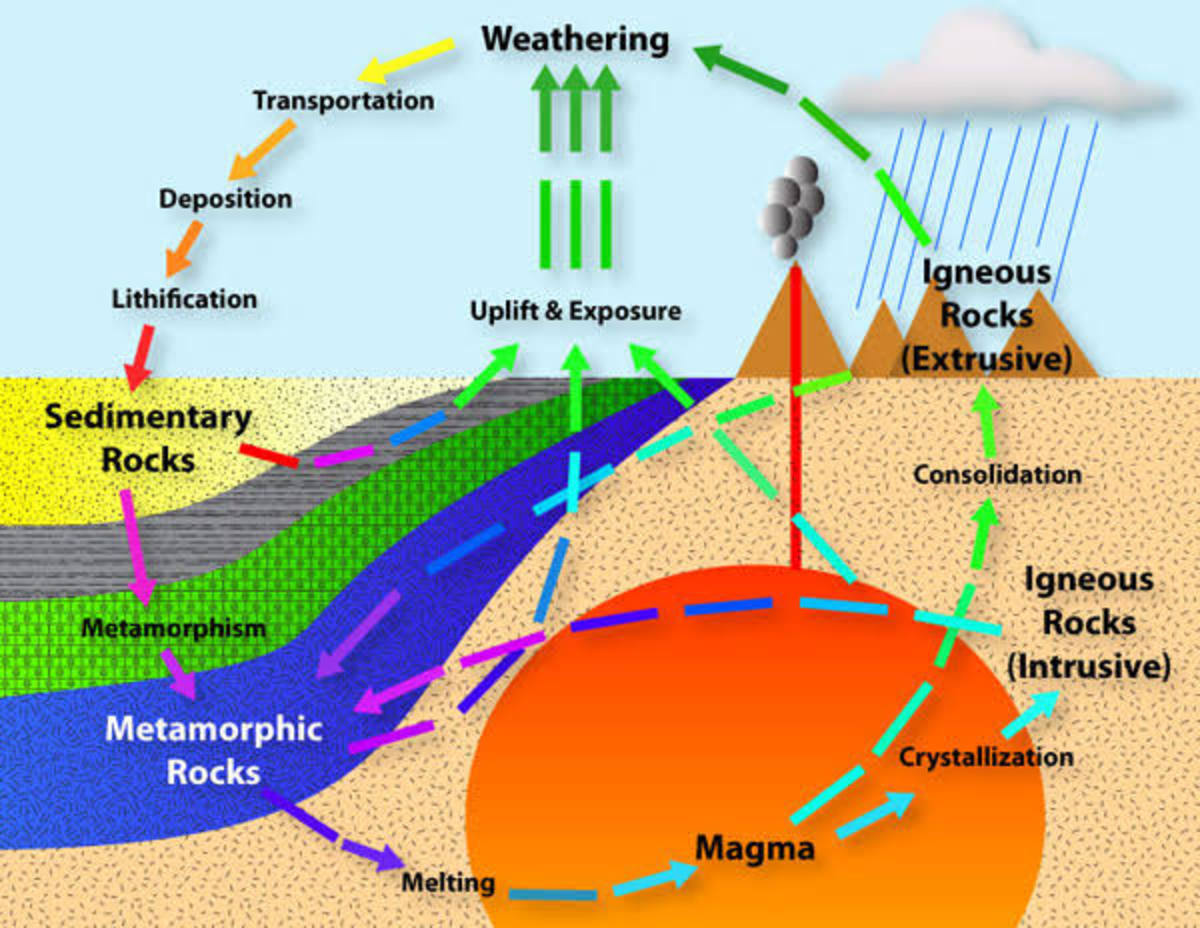Time
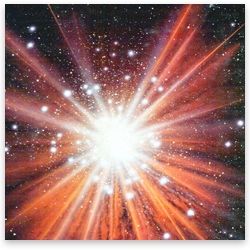
What is deep time? Explore the geological time scale.
What is Deep Time? Deep Time is time in geological sense and has to do with the Earth's geological history, which dates back billions of years.
People have different definitions of what they consider to be a long time, and of course sometimes that depends on the situation. But, learning about geological time or Deep Time gives us a whole new perspective on time because what we consider a long time and a long time in a geological sense are two very different things.
In this lens, I am going to explore Deep Time and discuss how scientists have broken down Earth's long history into a timeline called the Geological Time Scale. The Geological Time Scale is in broken into segments according to the fossils present and types of rocks found in several different locations. Age is determined by radiometric dating and comparing to other formations in the location. Each segment of the time scale is named according to location or some other identifying factor; i.e. the Mississippian Period was named that because it was found in Mississippi. However, it is the Carboniferous in other locales. Some of these segments last for thousands of years, some last for millions of years.
This lens is the next section to my first lens, Birth of a Universe, and covers the beginning of geological time through the Precambrian into the new Eon, the Phanerozoic. The Phanerozoic begins a new era as well, the Paleozoic. I will end there and begin another lens on the next era, the Mesozoic Era, which consists of three periods, the Triassic, Jurassic, and the Cretaceous. Of course, within these periods it is even more broken down so I will just cover the main segments of the Geological Time Scale.
Below you will find a detailed image of the Geological Time Scale which is from the Geological Society of America's website. If you would like to learn more about the time scale or geology, or perhaps see a larger version of the image, you can get to their website by clicking here: Take me to the Geological Society of America's website. If you're interested in learning more about geology, when the latest earthquakes happened and more, you can go to the United States Geological Survey's website here.
Thanks for stopping by. Have a great day!
Image courtesy Feenix Publishing
Image courtesy chronos.org.
Edited 6-2-12
The Big Bang
Creation of the Moon
Artwork by ErinElise
Hadean Eon
4.6 to 3.8 Billion Years Ago
Baby Earth - The Hadean Eon: The Age of Planetary Formation
In the Beginning, God created the Heavens and the Earth. Now the Earth was formless and empty..." Genesis 1:1-2
The Geological Record begins with the Hadean Eon. The Hadean Eon took place from 4.6 billion years ago to 3.8 billion years ago.
During the Hadean, it is believed that the Earth wasn't inhabitable by anything that lives today. Earth was undergoing heavy meteor bombardment and apparently was a pretty violent place. The atmosphere was hot and dense, was without oxygen, consisted of hydrogen, CO2, ammonia, methane and steam. That steam eventually condensed and formed the first oceans. There was no life on Earth at this time, but the organic building blocks of life such as amino acids, DNA, and RNA first appeared during the Archaen Eon.
What Happened During the Hadean
Major events of the Hadean Eon
The Earth was formed.
An enormous planetoid impacts the Earth and would eventually form the Moon.
The Earth and Moon experienced massive meteor bombardments.
Earth's interior was molten and separated into layers.
The atmosphere was very hot and dense and consisted of hydrogen, CO2, steam, ammonia and methane. There was no oxygen.
The boiling steam condensed into oceans.
The oldest rocks were found date back this time period.
There were no life forms but the organic chemical components of the building blocks of life (amino acids, RNA, DNA) first appeared.
Videos Depicting the Hadean Eon
"In the beginning, God created the Heavens and the Earth. Now the Earth was formless and empty..." Genesis 1:1-2
Archean Eon
3.8 to 2.5 Billion Years Ago
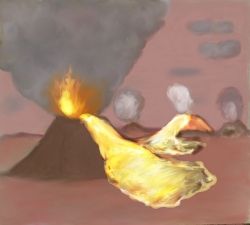
Archean Eon: The Age of Slow Stabilization
3.8 to 2.5 Billion Years Ago
And God said, "Let the water under the sky be gathered to one place, and let dry ground appear." Genesis 1:9
The Archean Eon lasted from 3.8 to 2.5 billion years ago. During the Archean, the Earth's temperature was about three times hotter than it is presently. The crust on Earth was very thin and there were heavy amounts of volcanic and tectonic activity. Over hotspots (places where there are magma chambers), protocontinents began to form. The atmosphere was still dense and hot and consisted of CO2, methane, and ammonia. The oceans were acidic, hot, and consisted of dissolved metals.
The first life forms appeared during this time. They were prokaryote bacteria, single-celled archea extremophiles, cyanobacteria formed stromatolites. Cyanobacteria then develop photosynthesis and that results in oxygen being pumped into the atmosphere.
What Happened During the Archaen
Major Events of the Archean
The temperature on Earth was three times hotter than it is at present.
Earth's crust was extremely thin.
Heavy volcanic and tectonic activity took place during this time causing protocontinents to begin to form over hotspots.
Earth's atmosphere was dense and hot, consisted of methane, ammonia, and CO2.
Earth's oceans were hot, acidic, and consisted of dissolved metals.
The first life forms began to appear - simply prokaryote bacteria as well as single celled archea and extremophiles. Cyanobacteria began forming stromatolites, began photosynthesis then pumping oxygen into the atmosphere.
Proterozoic Eon
(Precambrian)
2.5 Billion Years Ago to
542 Million Years Ago
The Earth's Shifting Techtonic Plates
Image courtesy wikipedia
What Happened During the Proterozoic
Major Events During the Proterozoic
Continents stabilize and begin to consolidate.
Oxygen atmosphere forms. Metals then "rust" out of the oceans.
The oceans turn their present color.
Banded Iron Formations were created as free oxygen began to oxidize the metal on Earth's surface and in the oceans.
Earth's surface is barren, desert-like and lifeless.
There was a major extinction event - oxygen "catastrophe" as microbes intolerant to oxygen were destroyed or forced into hiding.
Green cyanobacteria or stromatolites dominated coastal waters. More oxygen is pumped into the air by the stromatolites photosynthesis.
The supercontinent Rodinia formed.
All of Earth's oceans became one called Mirovia.
There was major mountain building (orogeny) that occurred during this time.
Earth's surface was desert-like, barren and lifeless.
Green cyanobacteria began to form and dominate the sea. Simply prokaryote bacteria began to experience endosymbiosis to form advanced cells (eukaryotes). Sex is discovered and microbes begin to "swap" genes more rapidly. Natural selection also increases. Red and green algae appear after "absorbing" cyanobacteria cells as chloroplasts.
Proterozoic Eon
"The Long Age of Planetary Maturation"
The Earth "comes of age" during this time as the oxygen atmosphere forms. The Proterozoic Eon lasted from 2.5 billion years ago to 542 million years ago and included the Paleo-Proterozoic, Meso-Proterozoic, Neo-proterozoic Eras. Depending on the location, these eras have periods within them. For instance, North America has different sections to its time scale than other localities.
Paleo-proterozoic
Then God said, "I give every green plant for food" Genesis 1:29-30
The PaleoProterozoic lasted from around 2.5 to 1.6 Billion Years Ago. During the PaleoProterozoic, the continents began to stabilize and consolidate. Large amounts of cyanobacteria (stromatolites) dominated coastal waters and began to undergo photosynthesis. This photosynthesis caused free oxygen to become present in the atmosphere. That new presence of free oxygen caused a chemical reaction, oxidization, which in turn formed BIF or Banded Iron Formations. The land was barren and lifeless. The presence of oxygen into the atmosphere took nearly a billion years. Life forms that were intolerant to oxygen suffered greatly and the first extinction event, an "oxygen catastrophe", destroyed Archean microbes or they were driven into hiding.
Meso-proterozoic
"...the administration of the mystery, which for ages past was kept hidden in God..." Ephesians 3:9
The Meso-proterozoic lasted from about 1.6 Billion Years Ago to about 850 Million Years Ago. During the Meso-Proterozoic, the Earth was continuing its journey and "coming of age" and new, advanced cells discovered sexual reproduction. The supercontinent Rodinia formed together during this time. There was one large ocean called Mirovia. There was a lot of mountain building taking place, called orogeny, during the Meso-proterozoic. The ocean was similar to the chemical makeup it has today, but the land was still barren and lifeless. Cyanobacteria continued to dominate coastal waters. Simple prokaryote bacteria under endosymbiosis (merge) to form advanced eukaryotic cells. Reproduction is discovered as microbes' gene swapping increases; natural selection also becomes more rapid.
Cryogenian Period
"He hurls down his hail like pebbles. Who can withstand his icy blast?" Psalms 147:17.
The Cryogenian Period lasted from about 850 Million Years Ago to 635 Million Years Ago and was called the Cryogenian due to the fact that the Earth experienced two of the worst Ice Ages that it had ever seen. The Cryogenian Period is referred to as "Snowball Earth".
Near the equator, there were glaciers nearly a mile thick and the average surface temperature of the Earth was about minus 70 degrees. These two glaciers, the Sturtian and Marinoan, were global Ice Ages. The Sturtian Ice Age took place from about 750 to 700 Million Years Ago and the Marinoan was from about 660 to 635 Million Years Ago. After each ice age, the Earth experienced a "Hothouse Earth" event wherein temperatures on Earth averaged about 110 degrees. Life on Earth during this time consisted of bacteria, archea, and cyanobacteria, red and green algae, which barely survived the extreme temperatures. These life forms are considered "extremophiles" as they survive near undersea volcanic vents and cracks where sunlight breaks through the ice sheet in extreme conditions.
The Ediacaran Period
"The Age of the Ediacaran Garden"
"You will be like a well-watered garden." Isaiah 58:11
The Ediacaran Period marks the appearance of Earth's first multicellular life. The Ediacaran, also known as the Vendian Period, and the Precambrian, was from about 635 to 542 Million Years Ago, in between the Archean and the Cambrian. The climate on Earth had begun to calm down after the Cryogenian freezing and extreme periods of heat. The continent Rodinia broke apart and the supercontinent Pannotia formed. All of Earth's land surface had a lifeless, barren landscape.
During the Ediacaran, odd looking lifeforms began to appear which resembled disks, fronds, little bags or air pillows. There were no predators during the Ediacaran and the life forms lived a pretty peaceful life. These life forms had no digestive tracts, legs, joints, shells or skeletons and they absorbed nutrients from the water they lived in. They were just living and there is no definite relationship to plants or animals which appeared later on. Most of these life forms eventually went extinct by the close of the Ediacaran.
Artwork by ErinElise
Phanerozoic Eon
542 Million Years Ago
to
Present
Cambrian Period
542 to 510
Million Years Ago
Artwork by ErinElise
First Arrival - David Attenborough
The Cambrian Period
The Age of the "Cambrian Explosion"
Cambrian Earth
Image courtesy earthgrind.com
"Your eyes will see strange sights and your mind imagine confusing things. " Proverbs 23:33
About 542 million years ago, the Phanerozoic Eon began. The Phanerozoic Eon includes the Paleozoic, the Mesozoic and the Cenozoic eras. The first of these three eras was the Paleozoic and the first period of the Paleozoic was the Cambrian Period. The Cambrian Period lasted from about 542 million years ago (MYA) to about 488 MYA.
During the Cambrian, a variety of life forms began. It was the "Cambrian Explosion". Life under the Earth's seas began to rapidly mutate. The Cambrian Explosion saw a variety of life forms, some which were only seen during this period of time, and some which evolved into forms of life still in existence today.
There was a lot of activity going on at this time on Earth as well. Geologically, there was a lot of mountain building (orogeny) and active plate tectonics.
Temperatures on Earth averaged around 72 degrees. Oxygen levels were about 6-10% of today's levels.
The Cambrian Explosion
What Happened During the Cambrian
Major Events of the Cambrian
The Cambrian Explosion - many varieties of new life forms such as molluscs, brachiopods, echinoderms; trilobites were very abundant, but at the end of the Cambrian they suffered a major extinction. Predators and herbivores appeared. First vertebrates appear. There were many strange life forms that appeared for the first time, but many die in a mass extinction at the end of the period. The development of eyes, shells, spines, legs, claws, etc. first appeared on animals.
The Sea level was rising (called the Sauk Sequence) and it was the end of the Varangian Glacation. Geologically there was rifting and passive margin subsidence. Most of the land masses were under water.
The supercontinent had begun to break apart.
An ocean had formed between Laurentia, Baltica, and Gondwana.
The average temperature on Earth was about 72f degrees.
Oxygen levels were low and carbon dioxide levels were about 6 to 10 percent of their present level.
Pannotia splits up into masses that eventually became Laurentia.
Panthalassic Ocean forms with expansive shallow seas.
Geology Links
Links to Learn More About Geology and Geologic Time
- Geologic Time: The Story of a Changing Earth
Link to the Smithsonian Institute - this is a really cool timeline of Earth's geologic history. - Welcome to the USGS - U.S. Geological Survey
Federal source for science about the Earth, its natural and living resources, natural hazards, and the environment. - The Geological Society of America -- Promoting Geoscience Worldwide
GSA is a leader in advancing the geosciences, enhancing the professional growth of its members, and promoting the geosciences in the service to humankind and stewardship of the Earth.
Challenges of Life
Ordovician Period
510 to 440
Million Years Ago

Ordovician Period
"The Age of Mollusks"
"...multiply on the Earth and be fruitful and increase in number upon it..." Genesis 8:17
The Ordovician Period began 510 Million Years Ago and ended about 440 Million Years Ago.
During the Ordovician, there was radiation of species, but not like was seen in the Cambrian Explosion. The Earth was geologically active at this time and by the close of the Ordovician, plants began to invade land.
Ordovician Earth
What Happened During the Ordovician
Major Events of the Ordovician
Laurentia and Gondwana lay near the equator.
There were wide, shallow seas.
The climate was warm, but later cooled.
The period ends in an Ice Age and a mass extinction.
Mollusks develop the ability to float and then diversified and multiplied. First appearance of shelled squids, nautiloids, bivalves, snails.
Trilobites diversified and flourished.
Multiplication of crinoids, echinoderms.
Corals, graptiolites and brachiopods flourish.
First jawless fish appeared.
Red and green algae thrive.
Appearance of first life on land (primitive liverwort plants and fungi).
Silurian Period
440 to 410
Million Years Ago
Silurian
The Age of Anthropods
"...I scourge you with scorpions."Kings 12:11
The Silurian Period was from 438 to about 406 Million Years Ago.
Silurian Earth
What Happened During the Silurian
Major Events of the Silurian
Silurian begins with a major extinction event.
Gondwana drifts north; Euramerica is formed.
As Ordovician glaciers melt, wide, shallow seas are formed.
The climate was a warm, "greenhouse" climate, which means it was high in carbon dioxide and low in oxygen.
Most of the land on Earth's continued to be lifeless and barren.
Earth's oceans were abundant with life.
Anthropods flourish and diversify; Euryptids (giant sea scorpions) dominate the seas.
Jawless fish make their appearance and briefly flourish.
First appearence of jawed bony fish.
Life begins to move onto land: primitive plants, ferns, fungi, and myriapoda lead the way.
Devonian Period
410 to 330
Million Years Ago
Devonian
The "Age of Fishes and the Invasion of Land"
"There will be large numbers of fish...where the river flows everything will live..."Ezekiel 47:9
Coming Soon!
Devonian Earth
What Happened During the Devonian
Coming Soon!
What's Your Opinion?
Is it possible to believe in both creation and evolution?
Mississippian Period
Missippian (Carboniferous)
The "Age of Amphibians"
"...the wild animals play...hidden among the reeds in the marsh."Job 40:21-22
The Mississippian is North America's part of the Carboniferous Period.
Coming Soon!
What Happenened During the Mississippian
Coming Soon!
Do you feel that a person can believe in both creation and evolution?
Pennsylvanian Period
PENNSYLVANIAN
PENNSYLVANIAN
Coming Soon!
What Happened During the Pennsylvanian
Coming Soon!
Permian Period
Permian
Coming Soon!
What Happened During the Permian
Coming Soon!
Let's see what people think...
Do you think it is possible believe in evolution and be a Christian?
Geology-Related Squidoo Lenses
- Tennessee Fossils
Learn about different fossils in other states! This is a Squidoo lens about fossils in Tennessee. - Paleontology
Paleontology is the study of fossils and fossils are very interesting, especially for kids. Here is a Squidoo lens on paleontology for kids. - Homeschooling geology lesson
Chronological history of geology - Kids investigate volcanoes
A Squidoo lens about volcanoes - Rock Unit Study
Learn about rocks - Growing Crystals
This is a Squidoo Lens about growing crystals
Conclusion -- Coming Soon!
Learn More About Geology
What
Do
You
Think?


